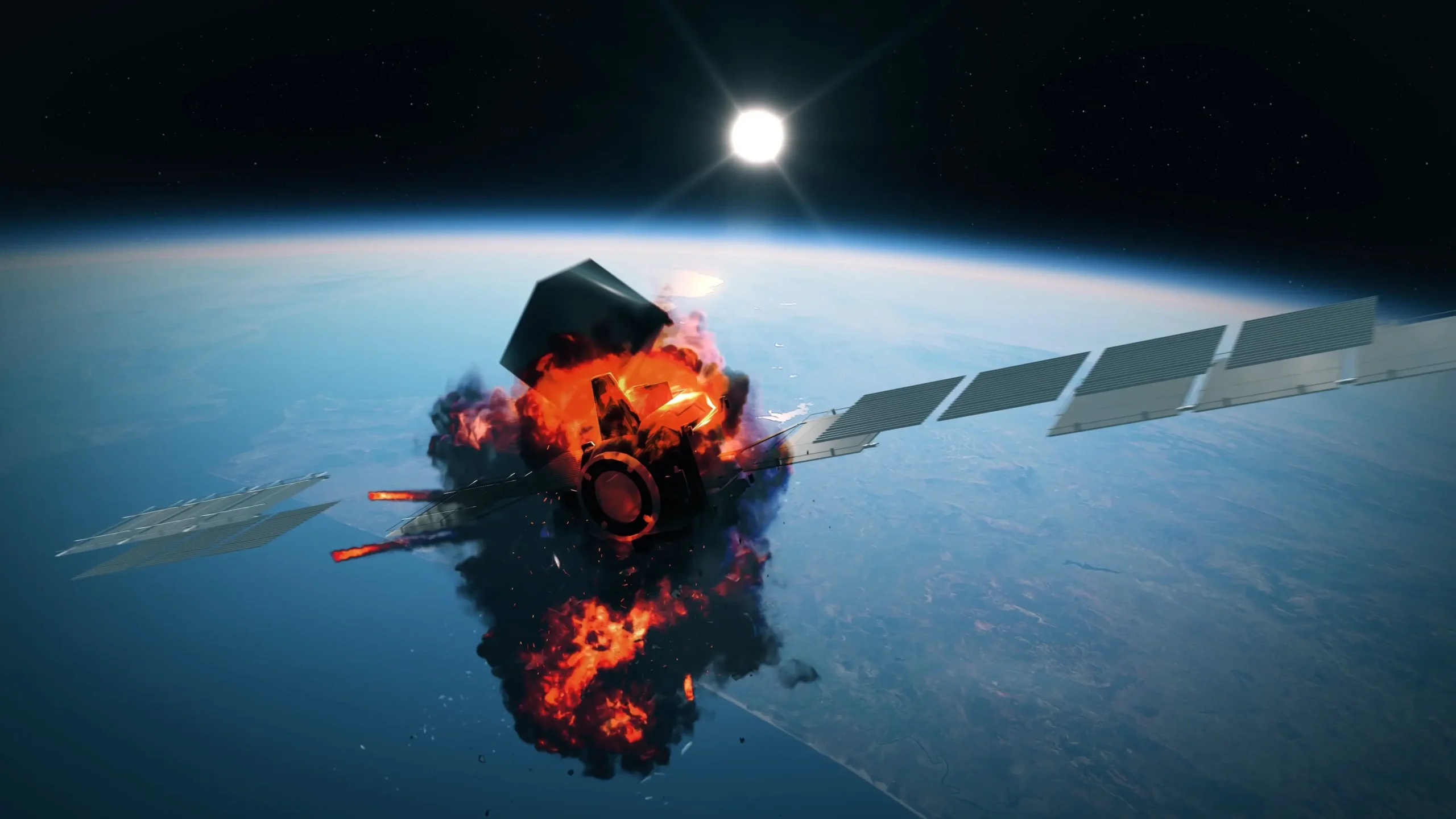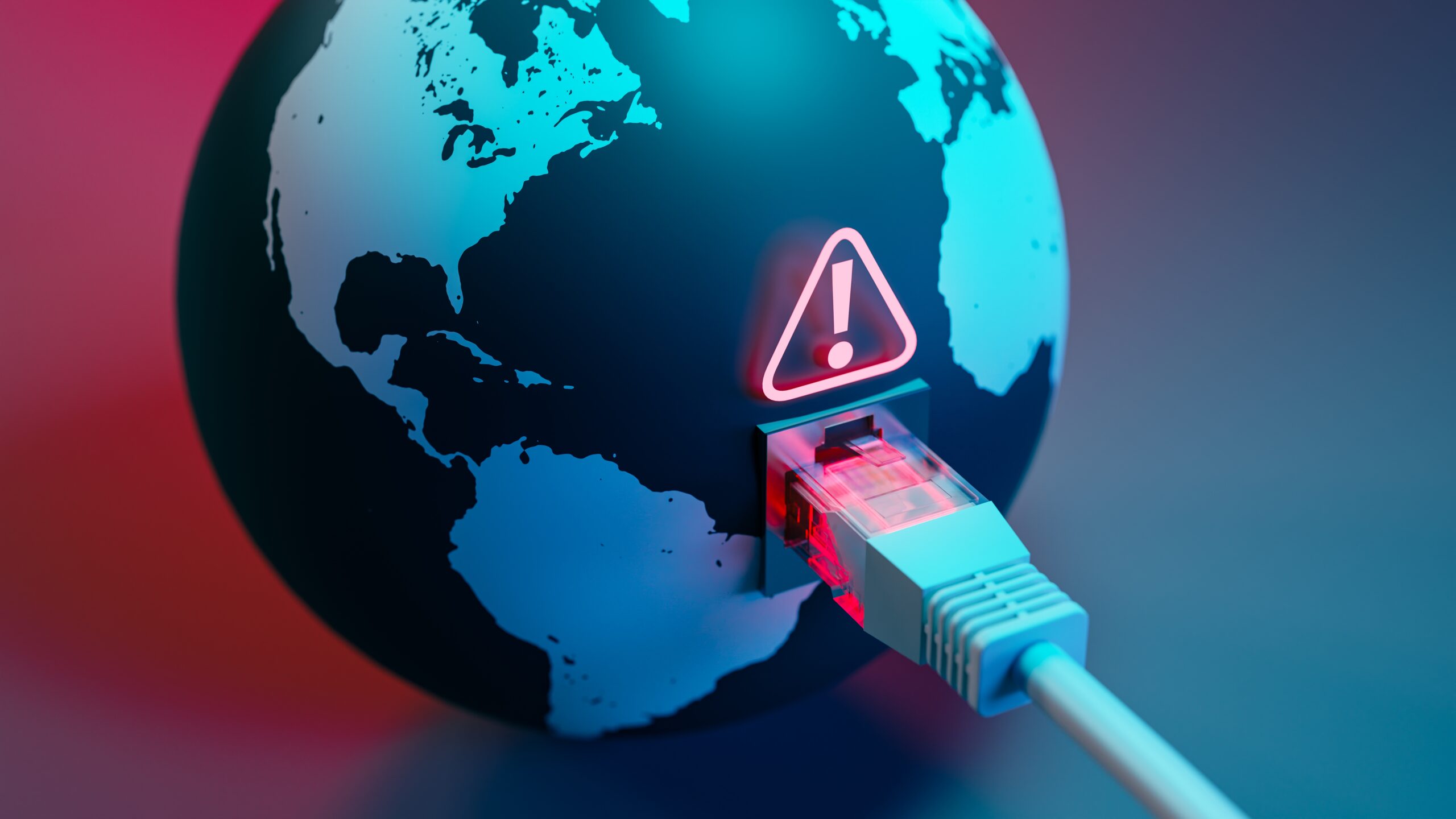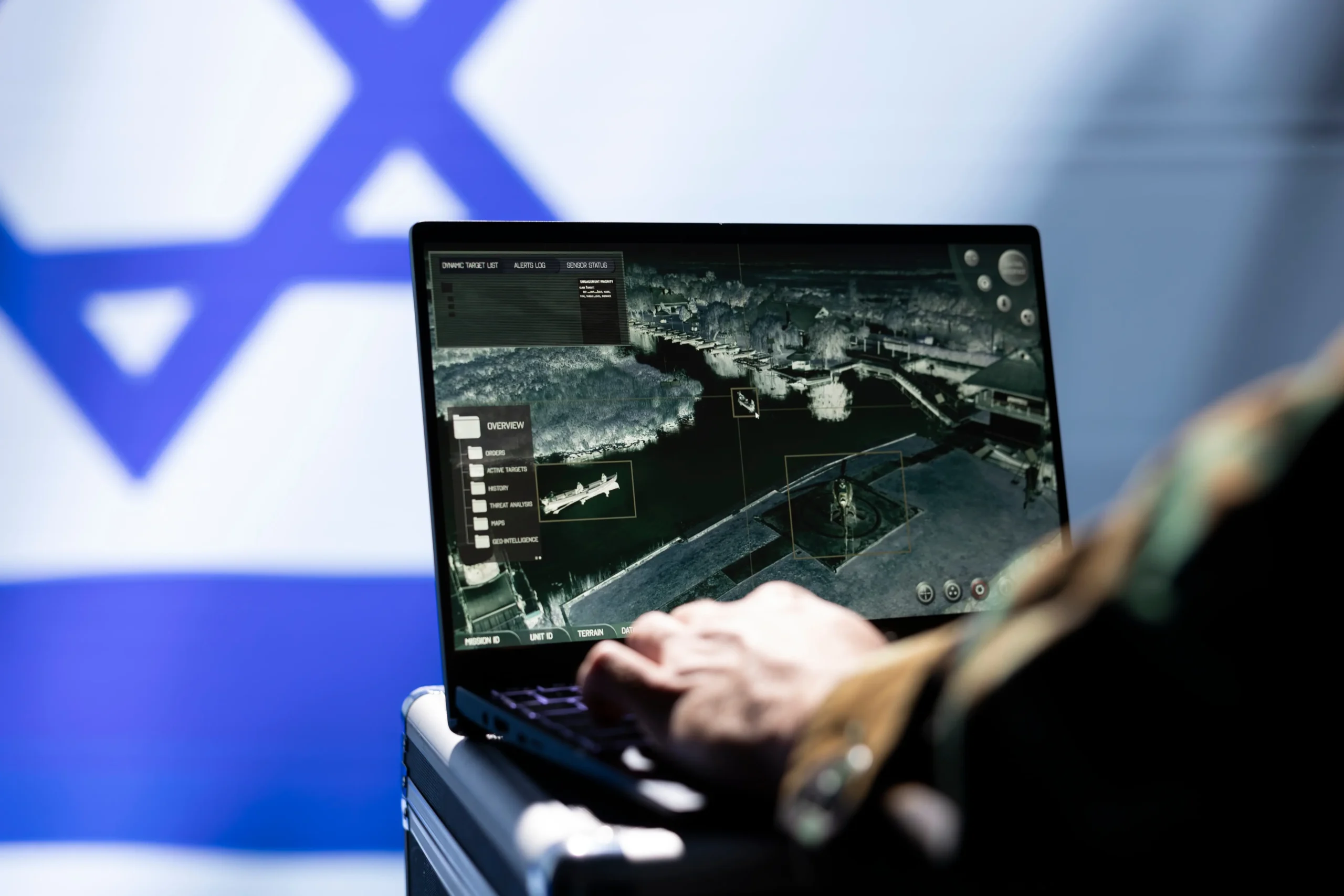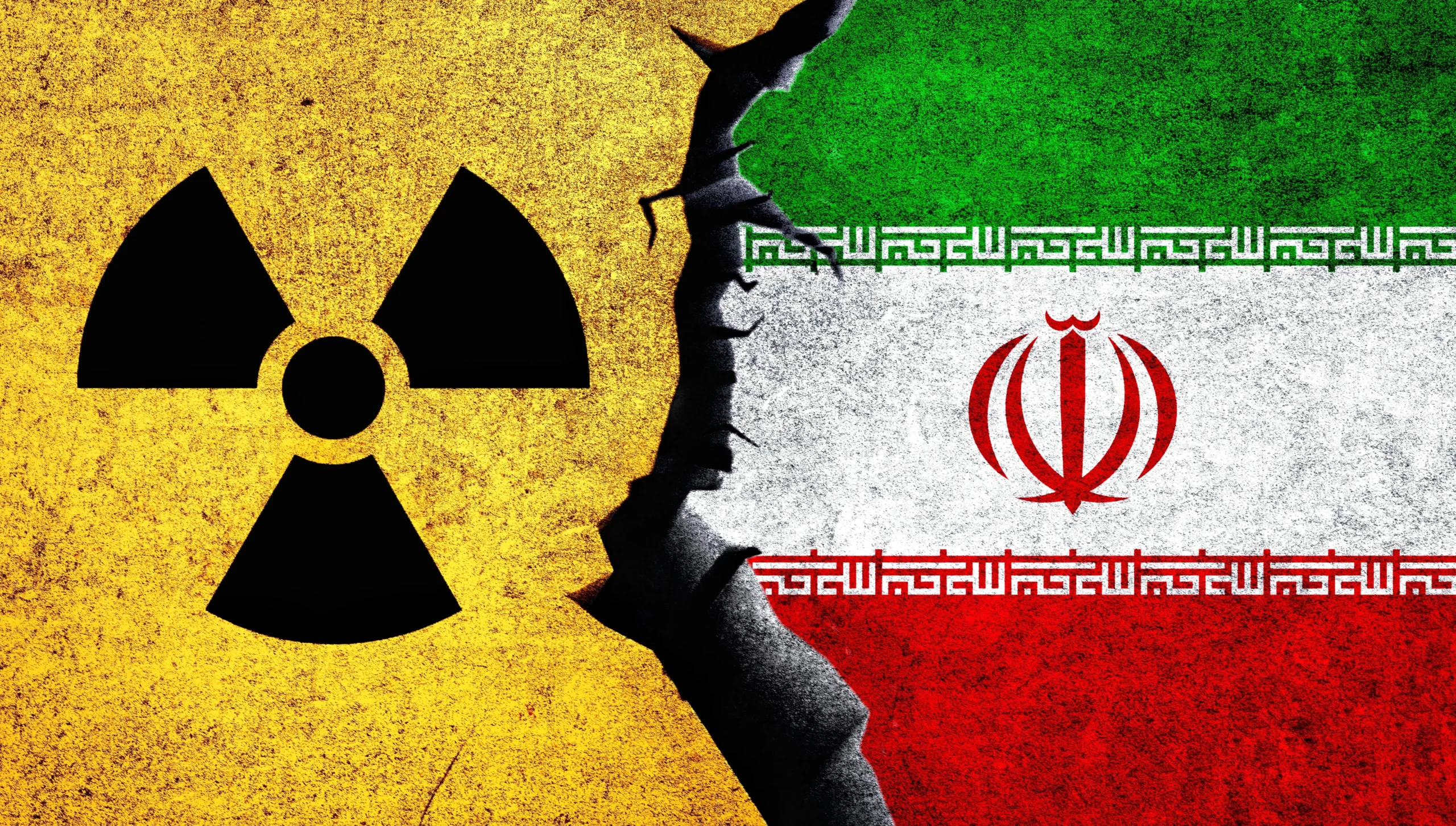Most Recent
3 Nov 2025
Digital Cognitive Twins: The Hidden Face of the Data War
Simulation technology is witnessing a profound transformation with the emergence of Digital Cognitive Twins (DCTs), the next generation of Traditional Digital Twins (DTs). These advanced systems go beyond conventional monitoring functions, integrating sophisticated AI models, particularly machine learning networks and natural language processing (NLP) techniques.
This convergence grants DCTs complex capabilities, enabling them to perform autonomous decision-making, conduct real-time self-optimisation, and develop predictive and anticipatory mechanisms. As a result, this technology is reshaping key sectors across multiple domains. In Industry 4.0, it enhances the efficiency and resilience of logistical supply chains; in urban governance, it enables the intelligent management of resources with exceptional accuracy; and in the healthcare sector, it accelerates the adoption of precision medicine tailored to the individual.
The exceptional performance of these systems depends on their ability to absorb and aggregate vast datasets, comprising thousands of variables for a single individual. These datasets extend well beyond the conventional boundaries of personal information, encompassing biometric inputs, genomic data, clinical records, and continuous monitoring of behavioural and psychological patterns derived from digital interactions.
This aggregation produces human simulation models of exceptional fidelity, a defining feature that places this technology squarely within the dual-use domain. While these models promise vast societal benefits, the compromise or seizure of these composite data repositories would constitute a catastrophic national security threat: the harm arising from the exposure of citizens’ data would be strategic, permanent, and irreparable.
The gravest risk lies in the possibility that state or non-state actors might exploit these datasets. Whereas past influence operations—most notably the disinformation campaigns of the last decade—targeted broad audiences, behavioural models derived from integrated digital-transformation processes enable bespoke cognitive-warfare interventions at the level of individuals or small groups. This capability transcends conventional geopolitical forecasting, enabling real-time prediction of societal behaviour.
At the core of the threat is the capacity to selectively manipulate these datasets or even fabricate synthetic records to engineer a pretext for intervention. By corrupting cognitive models, an adversary can simulate a manufactured state of public unrest, precipitate mass psychological collapse, or stage apparent systemic institutional failure—thereby manufacturing a spurious justification for political, economic or security interventions.
30 Oct 2025
Embryo Futures: Life Without Eggs or Sperm
In a world where reproduction no longer requires bond, lineage, or even
parents, humanity has severed its oldest bond: the family. By 2070, governments no longer wait
for couples to conceive, they manufacture life in humming factories of glass and steel, raising
entire generations in artificial wombs. Children emerge without mothers or fathers, only the state
and its machines.
Embryo Futures: Life Without Eggs or Sperm, a story from AHRC’s Futures Imagined series,
envisions a tomorrow where population decline is met not with reform but with replacement. At
once a tale of survival and of loss, it asks what becomes of identity, belonging, and love when
society decides that human roots are optional.
Futures Imagined is a publication exploring emerging trends through imaginative forecasting. Rather than relying on strict methodologies, this piece invites AHRC writers to creatively narrate a possible future reality shaped by current developments.
20 Oct 2025
The Future Role of China in the GCC’s Tech Transition
China has a long-term goal to be a global leader in technology. To achieve such ambition, the country has taken serious steps widening its Belt and Road Initiative (BRI) traditional infrastructure projects to incorporate digital infrastructure projects embodied in the Digital Silk Road (DSR). The DSR was initially launched in 2015 by the government as an idea on paper and during the opening ceremony of the First Belt and Road Forum in May 2017, China’s President Xi Jinping, adopted the DSR term officially and it was incorporated in the government’s BRI strategy as the digital dimension.
The DSR initiative focuses on building digital infrastructure and exporting its technology to the beneficiary countries, it includes telecommunications infrastructure, like 5G networks, overland fibre-optic cables, data centres, cloud computing, artificial intelligence (AI), as well as applications that support e-commerce and mobile payments, along with smart cities and surveillance technology. Additionally, the DSR provides support to Chinese tech companies, like ZTE, Huawei, and Alibaba, to carry on the work with the beneficiaries.
The DSR aims to enhance Beijing's global digital influence as it creates opportunities for a wide range of cooperation and partnerships between Chinses tech companies and other beneficiaries around the world in areas of digitalization and AI. China’s DSR encompass a variety of projects in 5G deployment, e-commerce platforms, and AI applications, such as DeepSeek which is an alternative model to ChatGPT.
China signed DSR cooperation agreements with several countries in Africa, the Middle East, Eastern Europe, Latin America, and Southeast Asia. The cooperation takes place between scientists and engineers from the recipient country and Beijing, like opening a training centre or in research and development (R&D). The areas of cooperation are wide, including smart cities, AI and robotics, clean energy, and surveillance capabilities, like data localization. GCC countries are considered one of the important partners to China’s DSR, where it is closely integrating in the GCC digitalization goals.
20 Oct 2025
The Ozempic Shockwave: How Is One Drug Impacting Global Food and Insurance Systems?
The worldwide rise of semaglutide—a marketed formulation under different names, most notably Ozempic—is occurring rapidly and in various ways. Since its initial approval for type 2 diabetes, Semaglutide has quickly adapted to drive changes in personal health behaviours, market dynamics, and healthcare policy priorities. The drug operates through a complex mechanism that alters the body’s appetite and metabolism, leading to the transformation. As a result, there is a widening divergence between its regulatory objective and a growing use as a weight loss tool.
The disconnect is not just clinical but a systemic coming together of prevalent cultural norms, insurance structures, pharmaceutical supply chains and global consumer trends. The increasing use of Semaglutide across different social classes and countries gives rise to important political economy challenges regarding the price of the therapy, access to it and the sustainability of national health systems.
This analysis examines semaglutide’s disruptive evolution from a drug invention to a global public health tool. The analysis focuses on the situation in the United States (U.S.), but it also examines future possibilities where affordability and scale could make the drug essential in combating obesity and metabolic disease.
Early Warning
30 Oct 2025
Embryo Futures: Life Without Eggs or Sperm
In a world where reproduction no longer requires bond, lineage, or even
parents, humanity has severed its oldest bond: the family. By 2070, governments no longer wait
for couples to conceive, they manufacture life in humming factories of glass and steel, raising
entire generations in artificial wombs. Children emerge without mothers or fathers, only the state
and its machines.
Embryo Futures: Life Without Eggs or Sperm, a story from AHRC’s Futures Imagined series,
envisions a tomorrow where population decline is met not with reform but with replacement. At
once a tale of survival and of loss, it asks what becomes of identity, belonging, and love when
society decides that human roots are optional.
Futures Imagined is a publication exploring emerging trends through imaginative forecasting. Rather than relying on strict methodologies, this piece invites AHRC writers to creatively narrate a possible future reality shaped by current developments.
17 Oct 2025
Robotics, China, and MENA: The Battle for Industrial Sovereignty
China’s robotics drive is no longer just a story of factories becoming more efficient but a story of a new industrial revolution. Each year, hundreds of thousands of new machines are deployed across its production lines, reshaping global supply chains and altering the balance of technological power. For the Middle East and North Africa, this shift raises questions that cannot be postponed. Automation is moving from the margins to the centre of economic strategy, and regions that fail to build capacity risk being locked into systems designed elsewhere.
The future of robotics in MENA is therefore not only about who installs machines the fastest, but about who sets the standards, who controls the data, and who determines the terms of industrial competition. The region’s next chapter will hinge on whether it becomes a maker of the technologies that define the century, or simply a consumer of them.
14 Oct 2025
Not All Quiet on the Western Front: Europe’s Next War
“Poland is at its closest to open conflict since World War Two,” warned Prime Minister Donald Tusk, after a sudden Russian airspace violation rattled the country. On September 9, a swarm of Russian drones entered Polish skies, prompting NATO aircraft to scramble and intercept several of them. It marked the first direct encounter between NATO and Moscow since Russia’s full-scale invasion of Ukraine on February 24, 2022. While the incident might have been a test by Putin to gauge NATO’s and Europe’s response, it also raises the specter of a potential war between Poland and Russia. Given Poland’s critical role within NATO and the EU, far greater than Ukraine’s, the implications of such a conflict would place the entire continent in Jeopardy. The pressing question now is: how likely is this war to erupt, and would Europeans bear the brunt?
29 Sep 2025
Pulse: Arabic Language and Regional Security
This Pulse survey, conducted in August 2025, examines public perceptions of the Arabic language and its role in shaping regional identity, security, and cohesion. The findings shed light on how populations view the weakening of Arabic as a potential threat, not only to cultural and social unity, but also to economic stability and national security. By exploring both immediate and long-term concerns, the survey provides valuable insights into how language is perceived as a pillar of resilience in the Arab world.
Economics and Energy
20 Oct 2025
The Ozempic Shockwave: How Is One Drug Impacting Global Food and Insurance Systems?
The worldwide rise of semaglutide—a marketed formulation under different names, most notably Ozempic—is occurring rapidly and in various ways. Since its initial approval for type 2 diabetes, Semaglutide has quickly adapted to drive changes in personal health behaviours, market dynamics, and healthcare policy priorities. The drug operates through a complex mechanism that alters the body’s appetite and metabolism, leading to the transformation. As a result, there is a widening divergence between its regulatory objective and a growing use as a weight loss tool.
The disconnect is not just clinical but a systemic coming together of prevalent cultural norms, insurance structures, pharmaceutical supply chains and global consumer trends. The increasing use of Semaglutide across different social classes and countries gives rise to important political economy challenges regarding the price of the therapy, access to it and the sustainability of national health systems.
This analysis examines semaglutide’s disruptive evolution from a drug invention to a global public health tool. The analysis focuses on the situation in the United States (U.S.), but it also examines future possibilities where affordability and scale could make the drug essential in combating obesity and metabolic disease.
30 Sep 2025
An Unequal Cost: How Space Debris Deepens the Exclusion of Developing Nations from the Economies of the Future
Since the launch of the first satellite in 1957, the Low Earth Orbit (LEO) has undergone a profound transformation from a near-empty frontier into a congested and polluted environment shaped by decades of human activity. Non-functional satellites, spent rocket stages, and fragmentation debris from collisions and explosions have accumulated to a mass exceeding 14,700 tons. Critical events have amplified the scale of the problem, most notably China’s Anti-Satellite Test (ASAT) in 2007 and the 2009 collision between the U.S. Iridium-33 and Russia’s Kosmos-2251, which together generated nearly one-third of all catalogued debris in LEO.
This material is unevenly distributed but highly concentrated between 750 and 1,000 kilometres, an orbital belt central to Earth Observation and communications. Objects in this altitude range can persist for centuries, while in the Geostationary Orbit (GEO) debris may remain indefinitely, underscoring the long-term persistence of the hazard. Consequently, orbital space has shifted from an open frontier to a finite and polluted resource requiring collective governance.
This study examines the economic and political dimensions of space debris. It assesses the direct costs borne by operators, the cascading risks to terrestrial infrastructure such as Global Navigation Satellite Systems (GNSS) and weather forecasting, and the disproportionate challenges facing developing nations. It concludes by analysing potential responses, ranging from mitigation strategies to Active Debris Removal (ADR), within the broader framework of international governance and global equity.
26 Sep 2025
The Global Economic Impacts of Starlink Outages: From Operational Fragility to Pathways of Resilience
In recent years, Low Earth Orbit (LEO) satellite constellations have emerged as a transformative layer within the global digital infrastructure, marking a departure from their original role as connectivity solutions for remote regions. These systems are now embedded within the operational cores of critical sectors such as civil aviation, maritime logistics, financial markets, and defence. The clearest manifestation of this structural shift is Starlink, operated by SpaceX, which by mid-2025 had exceeded 7 million users across more than 150 countries, with exponential growth rates in high-value, latency-sensitive industries.
This rapid technological and geographical expansion has positioned Starlink as a globally integrated utility—yet one that operates outside conventional regulatory regimes. It represents a structural concentration of control over global data flows in a single, privately held entity. The dual outages that occurred in July and September 2025 exposed deep systemic vulnerabilities within the Starlink network, including software architecture fragilities and environmental sensitivities to space weather events. These incidents prompted urgent questions about the stability of a critical infrastructure layer that now underpins sectors central to national sovereignty and global economic coordination.
This report interrogates the systemic risks embedded in the global economy’s growing dependence on LEO constellations through two interlinked analytical lenses. The first is a technical-political economy perspective, which examines the underlying architecture of the Starlink network and the typology of its failure modes—both endogenous and exogenous. The second is a forward-looking, scenario-based assessment that models the potential global economic consequences of a 24-hour Starlink outage in 2032. Through this dual approach, the analysis traces the contours of a new strategic dilemma: how to govern an emergent, transnational infrastructure whose failure could trigger multi-sectoral crises at planetary scale, yet whose design and control remain entirely privatized.
25 Sep 2025
UAE’s New Trade Bloc: Ambition, Global Positioning, and Challenges
The United Arab Emirates (UAE) is intending to establish a new trade bloc, a strategic and interconnected initiative aimed at achieving multiple goals on both the national and the international level. This trade block should not be interpreted in isolation, rather as part of the UAE’s wider economic and geopolitical strategy, which reflects the changing and evolving dynamics of the global trade landscape.
In a fragmented globalization era, where competition and integration attempt significantly increase between the regional trade networks and the multilateral systems, the UAE is poised to maintain its influence and relevance by positioning itself at the forefront of the global landscape. This approach will benefit the UAE on different levels, including advancing domestic priorities while simultaneously enhancing its leverage within the evolving global economic power. Nevertheless, the bloc’s success is not completely guaranteed, as it will need to navigate significant regulatory, infrastructural, and political barriers to translate its potentiality into tangible outcomes.
Political Studies
3 Nov 2025
Digital Cognitive Twins: The Hidden Face of the Data War
Simulation technology is witnessing a profound transformation with the emergence of Digital Cognitive Twins (DCTs), the next generation of Traditional Digital Twins (DTs). These advanced systems go beyond conventional monitoring functions, integrating sophisticated AI models, particularly machine learning networks and natural language processing (NLP) techniques.
This convergence grants DCTs complex capabilities, enabling them to perform autonomous decision-making, conduct real-time self-optimisation, and develop predictive and anticipatory mechanisms. As a result, this technology is reshaping key sectors across multiple domains. In Industry 4.0, it enhances the efficiency and resilience of logistical supply chains; in urban governance, it enables the intelligent management of resources with exceptional accuracy; and in the healthcare sector, it accelerates the adoption of precision medicine tailored to the individual.
The exceptional performance of these systems depends on their ability to absorb and aggregate vast datasets, comprising thousands of variables for a single individual. These datasets extend well beyond the conventional boundaries of personal information, encompassing biometric inputs, genomic data, clinical records, and continuous monitoring of behavioural and psychological patterns derived from digital interactions.
This aggregation produces human simulation models of exceptional fidelity, a defining feature that places this technology squarely within the dual-use domain. While these models promise vast societal benefits, the compromise or seizure of these composite data repositories would constitute a catastrophic national security threat: the harm arising from the exposure of citizens’ data would be strategic, permanent, and irreparable.
The gravest risk lies in the possibility that state or non-state actors might exploit these datasets. Whereas past influence operations—most notably the disinformation campaigns of the last decade—targeted broad audiences, behavioural models derived from integrated digital-transformation processes enable bespoke cognitive-warfare interventions at the level of individuals or small groups. This capability transcends conventional geopolitical forecasting, enabling real-time prediction of societal behaviour.
At the core of the threat is the capacity to selectively manipulate these datasets or even fabricate synthetic records to engineer a pretext for intervention. By corrupting cognitive models, an adversary can simulate a manufactured state of public unrest, precipitate mass psychological collapse, or stage apparent systemic institutional failure—thereby manufacturing a spurious justification for political, economic or security interventions.
20 Oct 2025
The Future Role of China in the GCC’s Tech Transition
China has a long-term goal to be a global leader in technology. To achieve such ambition, the country has taken serious steps widening its Belt and Road Initiative (BRI) traditional infrastructure projects to incorporate digital infrastructure projects embodied in the Digital Silk Road (DSR). The DSR was initially launched in 2015 by the government as an idea on paper and during the opening ceremony of the First Belt and Road Forum in May 2017, China’s President Xi Jinping, adopted the DSR term officially and it was incorporated in the government’s BRI strategy as the digital dimension.
The DSR initiative focuses on building digital infrastructure and exporting its technology to the beneficiary countries, it includes telecommunications infrastructure, like 5G networks, overland fibre-optic cables, data centres, cloud computing, artificial intelligence (AI), as well as applications that support e-commerce and mobile payments, along with smart cities and surveillance technology. Additionally, the DSR provides support to Chinese tech companies, like ZTE, Huawei, and Alibaba, to carry on the work with the beneficiaries.
The DSR aims to enhance Beijing's global digital influence as it creates opportunities for a wide range of cooperation and partnerships between Chinses tech companies and other beneficiaries around the world in areas of digitalization and AI. China’s DSR encompass a variety of projects in 5G deployment, e-commerce platforms, and AI applications, such as DeepSeek which is an alternative model to ChatGPT.
China signed DSR cooperation agreements with several countries in Africa, the Middle East, Eastern Europe, Latin America, and Southeast Asia. The cooperation takes place between scientists and engineers from the recipient country and Beijing, like opening a training centre or in research and development (R&D). The areas of cooperation are wide, including smart cities, AI and robotics, clean energy, and surveillance capabilities, like data localization. GCC countries are considered one of the important partners to China’s DSR, where it is closely integrating in the GCC digitalization goals.
16 Oct 2025
Algorithms of Genocide: From Silicon Valley to the Gaza Strip
The tools of twenty-first-century warfare are no longer confined to conventional weapons such as missiles, tanks, and aircraft. They have expanded to encompass cloud-computing platforms, artificial-intelligence systems, and data-processing capabilities developed and managed by major U.S.-based technology corporations, including Microsoft, Google, and Amazon. These companies have become central pillars in the conduct of modern digital warfare, with their decisions and policies exerting profound geopolitical influence and forming an integral component of contemporary global power dynamics.
In this context, the relationship between commercial technology corporations and the Israeli military has undergone a profound transformation, moving beyond the traditional model of supplying hardware and software to establish digital infrastructure as a central instrument in the management of modern conflict, most notably during the war on Gaza. A new paradigm of integration between the military and the private sector has emerged, in which commercial digital systems have become an inseparable component of military capability, blurring the boundaries between market-driven services and state security architectures.
The management of the global narrative surrounding humanitarian catastrophes, including the confirmed famine and persistent reports of atrocities, has become inseparable from the content-governance policies imposed by major digital platforms controlled by technology conglomerates. These platforms frequently amplify official narratives while minimising or obscuring the magnitude of famine and conflict. At the same time, they enable advanced surveillance mechanisms that restrict or silence independent media operating within conflict zones.
The war in Gaza has underscored the dual and increasingly intricate role of major technology corporations, particularly Google (Alphabet Inc.) and Microsoft Corporation, in both modern warfare and global information control. These entities operate within a mutually reinforcing dynamic, providing specialised cloud-computing and artificial-intelligence infrastructure that enables unprecedented levels of lethal military operations and mass surveillance across Gaza and the occupied territories. Concurrently, they deploy advanced mechanisms of information control, encompassing internal content moderation, algorithmic bias, and data suppression, to recalibrate public narratives and shield corporate power from accountability.
This analysis, therefore, examines the role of technology corporations in shaping the dynamics and repercussions of the conflict in Gaza, exploring how they contribute to the engineering of the informational, political, and humanitarian landscape within the framework of contemporary warfare. In this process, these corporations are transformed from ostensibly neutral service providers into active participants within the conflict’s infrastructural ecosystem.
14 Oct 2025
What Would Iran’s Withdrawal from the Nuclear Non-Proliferation Treaty Mean?
Iran’s nuclear file is witnessing a rapidly escalating trajectory, underscored by its potential decision to withdraw from the Nuclear Non-Proliferation Treaty (NPT). This move could redefine the very architecture of global nuclear governance. Should this course of action materialise, it would mark the first precedent of its kind since North Korea’s withdrawal from the same treaty in 2003, transforming what might initially appear as a mere negotiating stance into a profound strategic turning point with far-reaching implications for the policies of the Middle East and the wider international order.
These Iranian threats, which began escalating in June 2025, did not emerge in a vacuum; instead, they were a direct reaction to a series of successive strategic developments. The U.S.–Israeli military strikes targeting Iranian nuclear facilities in June 2025 significantly deepened the complexity of the situation, while the crisis further intensified when the European troika (E3) announced in September 2025 the activation of the “snapback mechanism,” thereby reimposing UN sanctions on Tehran. Taken together, these measures led Iran to conclude that the economic and political value of adhering to international treaties had effectively evaporated.
The gravity of the situation extends beyond political dimensions to encompass highly sensitive technical and legal aspects. Technically, Iran possesses between 400 and 450 kilograms of uranium enriched to roughly 60%; a stockpile that places it only weeks away from producing weapons-usable fissile material if enrichment were elevated to about 90%. Legally, Iran’s invocation of Article X of the NPT would trigger an immediate cessation of the International Atomic Energy Agency’s (IAEA) oversight and remove the Comprehensive Safeguards Agreement from the equation, paving the way for near-total diplomatic isolation. Consequently, the fallout from withdrawal would transcend the confines of Tehran’s nuclear programme and create a broad regional security dilemma.











